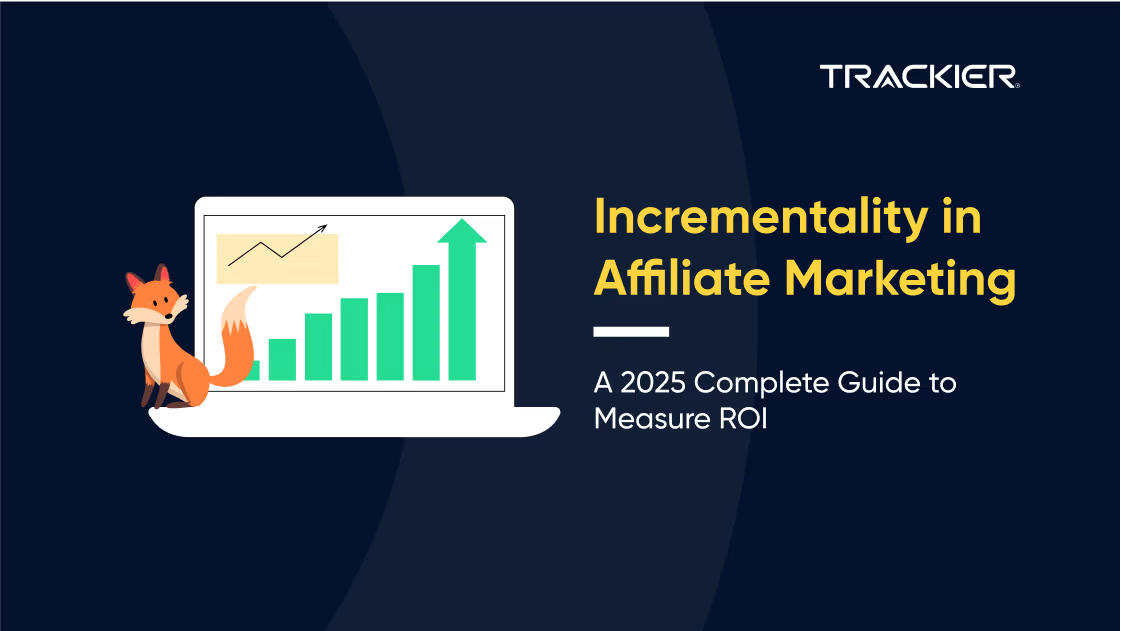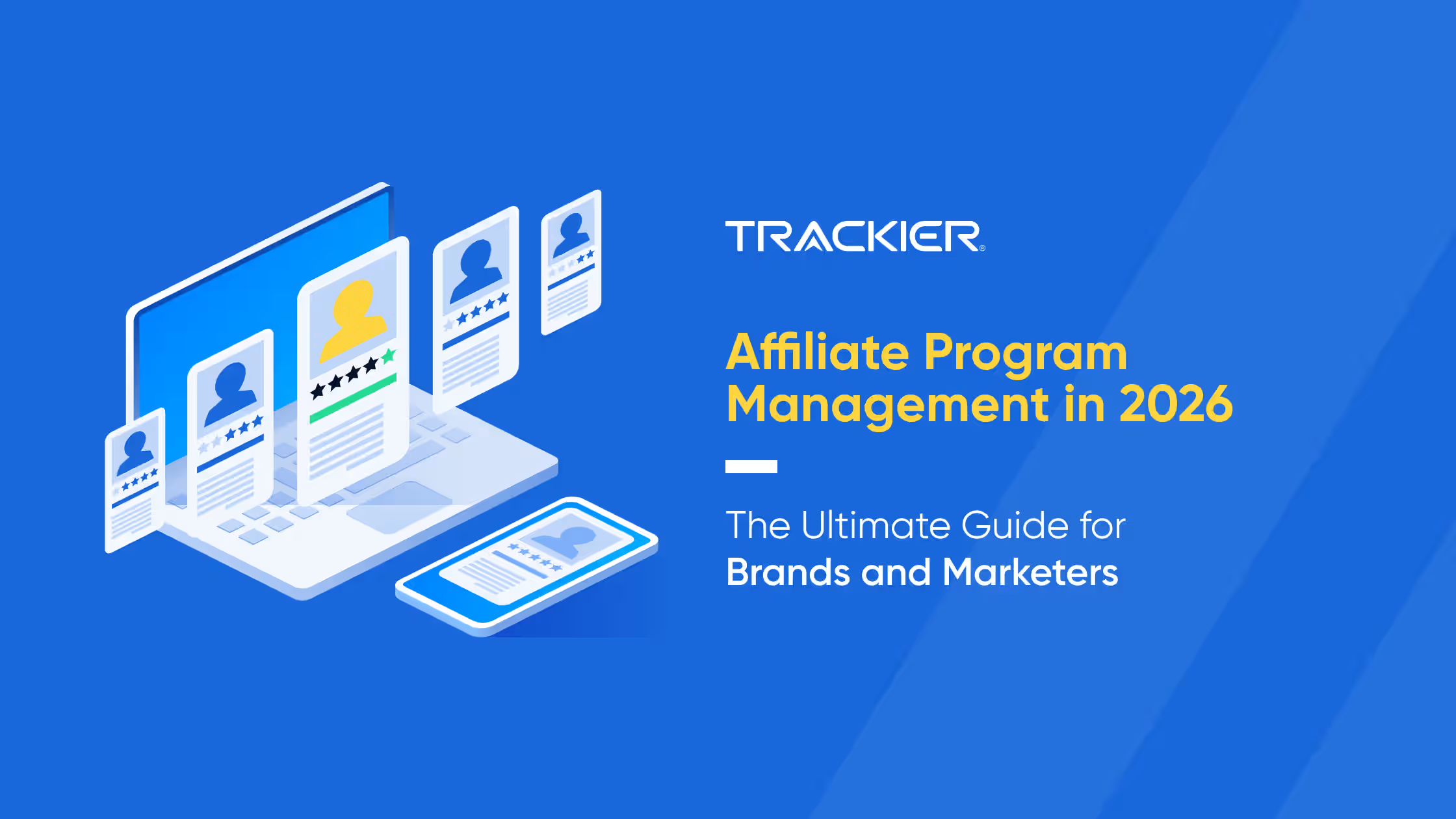Affiliate marketing is the most powerful tool that a business can use to extend its reach and gain new customers. In fact, the worldwide affiliate marketing industry is expected to hit $37.3 billion by 2025 and grow to $48 billion by 2027, with a compound annual growth rate of about 9.89%.
There are different kinds of audiences that an individual and a business can use to market their product or service. However, to get the right kind of partners you have to understand how to create affiliate program and track your affiliate program.
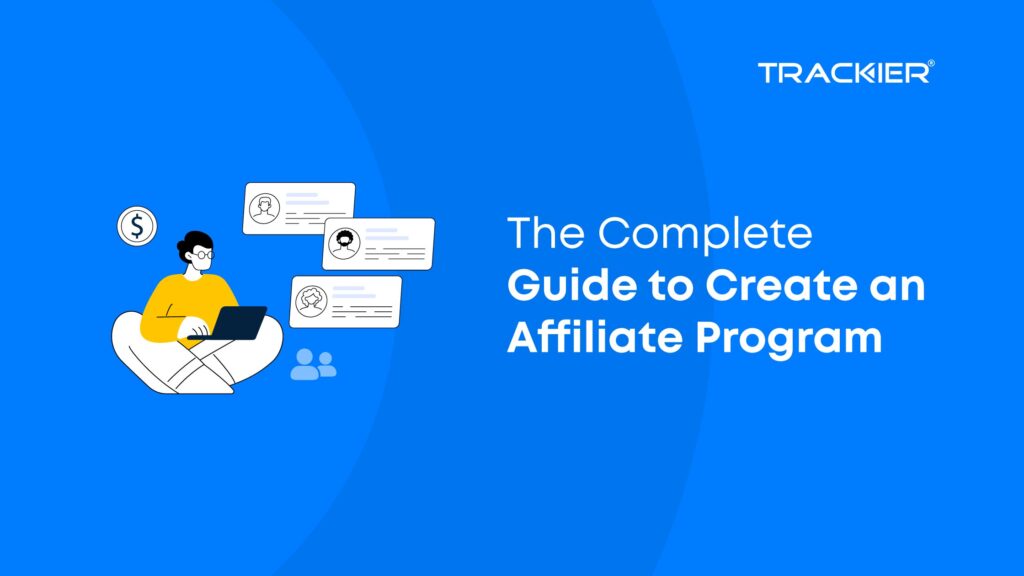
Follow all of the steps necessary to outline how to make an affiliate marketing program defining what your goals will be right to administering your network of affiliates.
What is an Affiliate Program?
An affiliate program is a form of performance marketing, wherein a company shares partnership terms with other firms or their direct associates to promote its diverse offerings.
The affiliate program provider will provide the affiliates with unique tracking links or codes, so when the customer clicks and does something that is desired by the affiliate, such as purchasing a product or creating an account for a free trial, the affiliate will get his commission.
This creates the perfect situation for:
Business:
Business houses can reach more customers, increase sales and enhance their brand image with little extra cost.
Affiliates: The affiliates earn their commissions through the promotion of other companies’ products and earn money through customer acquisition as well.
Customers: The customers find the products or services that can benefit them from people whom they trust.
Why Start an Affiliate Program?
Such are the reasons and some of the benefits of an affiliate program for your marketing strategy.
Some of the key reasons include:
Cost-Effective Customer Acquisition:
You only pay affiliates when they achieve any desired outcomes, which helps cut down on the cost incurred compared to marketing options.
Increased Exposure and Brand Recognition:
Affiliates have dedicated and related followers and their audience which offers the chance to tap into new customer bases and enhance the presence of the brand.
Increased Sales Potential:
Affiliates do the work of endorsing your goods and services thus bringing targeted traffic that ultimately results in increased sales.
Improved Brand Credibility:
Affiliates who like your products genuinely can promote your brand thus increasing the level of trust and credibility.
Important Information about Customers:
This way, through the performance of affiliates, one comes to know the nature of customers who tend towards the product and their buying patterns, so that you can personalize and develop your marketing strategies accordingly.
How to Start an Affiliate Program and Set Goals
Before setting up an affiliate program, define your goals.
When you clearly state your program’s goals and target audience, you will be able to create an affiliate program that brings in the right affiliates, driving the results you desire.
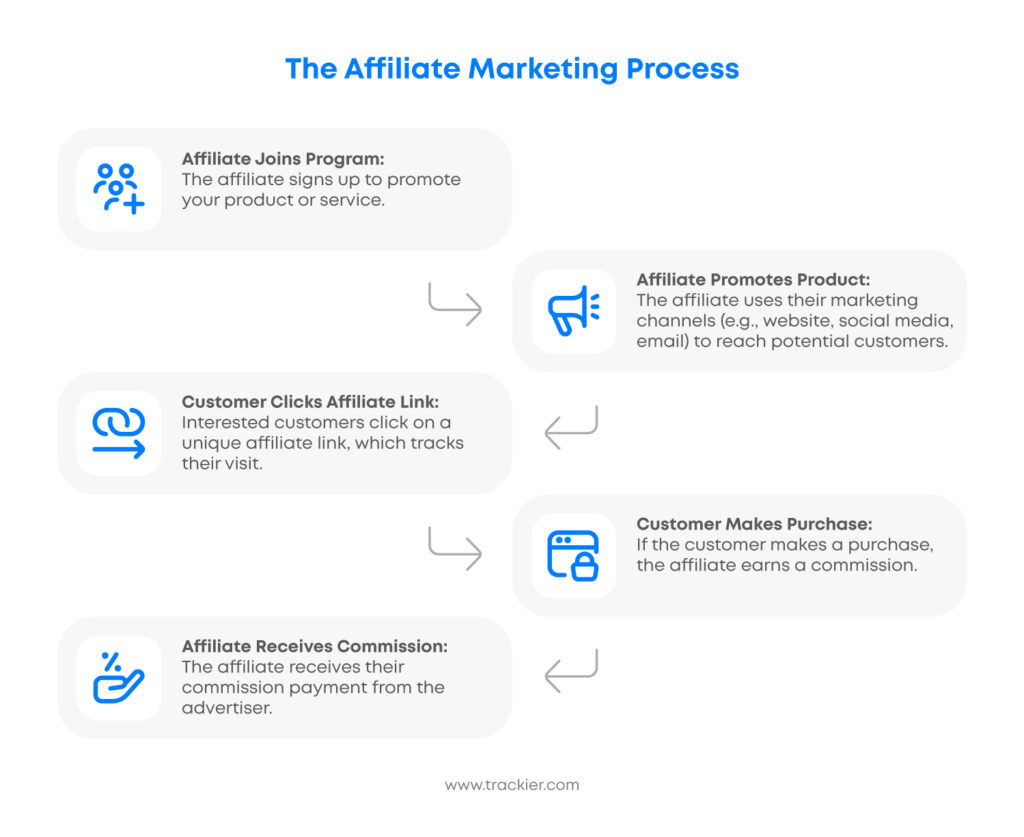
How to create affiliate program?
After understanding the scope of work, it hence becomes appropriate to launch an affiliate program. Important things to consider include the following:
- Decide how you will pay your affiliates. The most common are:
Pay-Per-Sale (PPS): This is earned each time they make a sale.
Pay-Per-Click (PPC): For every person an affiliate clicks through their link, even if a sale isn’t made, they earn the pay.
Pay-Per-Lead (PPL): This pays the affiliate for every potential client that is signed up under them.
- Commission rates need to be set competitively to motivate the affiliates to sell more effectively your products or services. This would also involve considering the industry norms and your budget, among others.
- Another very important factor would be the attribution period for which a click is deemed to have led to a specific sale.
- Be clear about the rules and what practices affiliates should be expected to engage in to avoid unnecessary conflict and lack of understanding.
- Enable your affiliates to succeed by giving them the proper tools and resources.
Training and Support: Provide support resources by which your affiliates clearly and effectively understand your program and products. You can retain high-performing affiliates with an appealing commission structure, useful resources, and a supportive atmosphere.
Building and Managing Your Affiliate Network
Once you have finally built your affiliate program, now is the time to start managing your network of affiliates.
- Use a combination of channels.
- Streamline the onboarding process to ensure a smooth transition for new affiliates.
- Maintain open and regular communication with your affiliates. Keep them informed about program updates, product launches, and marketing strategies.
- Use affiliate tracking software, such as Trackier, to track the performance of affiliates and report on detailed statistics.
- Offer incentives and rewards that will motivate affiliates to stay on board. Contests and giveaways are just some of them. Award prizes or bonuses to those affiliates who hit certain performance thresholds.
- To protect your program from fraud, apply advanced fraud measures, such as Fraud Shield, and closely monitor affiliate behaviour, which is helpful indeed.
Promotion of Your Affiliate Program: Here is a brief reference on what you should do to promote your affiliate program.
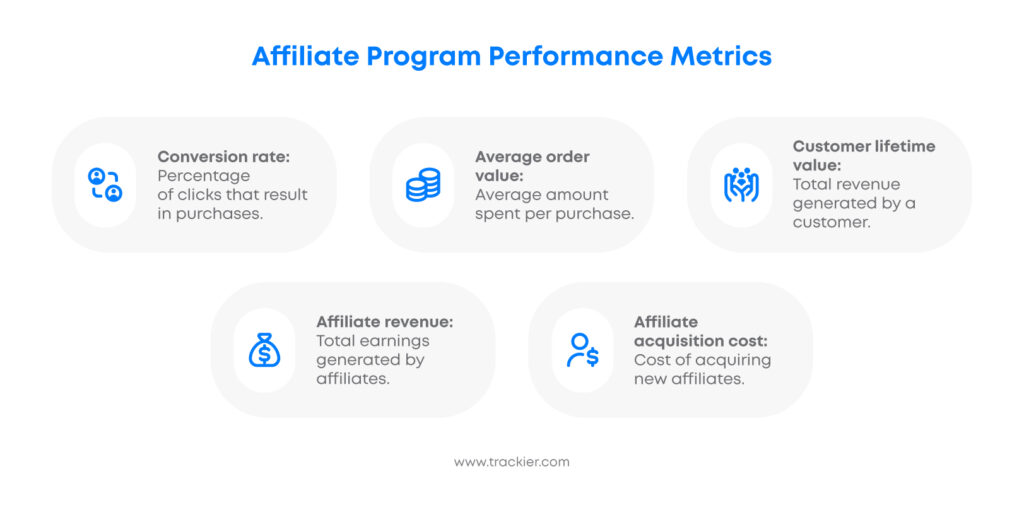
Here are the strategies:
Develop interesting and informative content that describes the benefits of the affiliate program and, most importantly, describe the benefits of the products or services sold.
Use social media websites to contact potential affiliates and promote your program.
Allow opting-in affiliates who are interested and build an email list for regular updates and promotions. Email marketing can be a great tool.
Affiliate Marketing Forums: Participate in online communities and forums that specialize in your niche and find other potential affiliates. These are the most important metrics you will want to keep track of:
Conversion Rate: Percentage of clicks that convert to desired actions, including sales or signups.
Average Order Value: Dollar amount spent by customers referred by an affiliate.
Customer Lifetime Value: The value a customer brings to your business over their lifetime.
Affiliate Acquisition Cost: What it costs to acquire a new affiliate.
Return on Investment: The profit earned by your affiliate program.
These metrics analyzed regularly will reveal to you areas of improvement, thereby allowing you to optimize your program and hence get better results.
Conclusion
A successful affiliate program is made through great management and complete optimization. Through the use of principles found in this guide, it will be easy to build a program that brings in high-converting affiliates, creates sales, and grows your business.
If done right with the right tool of measurement and sincere efforts, you could be building an affiliate program that would propel your business into growth and success.
FAQs
1. How do I scale my affiliate program successfully?
To scale your affiliate partnerships program, focus on top affiliates who have proven to be successful, providing incentives for affiliate tiers and spreading the word to new potential partners. Ensure your affiliates have up-to-date affiliate tools, regular communication, and competitive commissions. Maintain track of all the program’s activities with a robust tracking platform like Trackier so you can make data-based decisions that will allow you to scale without sacrificing transparency or going broke.
2. What are key metrics to track in affiliate programs?
Some important metrics include conversion rate, average order value, customer lifetime value, affiliate acquisition cost, and ROI. Monitoring the metrics on a regular basis also allows businesses to understand which affiliates are performing well, to make adjustments to a commission structure, and to enhance marketing strategies. It also helps your business to assess if the affiliate program is still profitable and scalable based on data-driven information.
3. How can I prevent fraud in affiliate marketing?
Fraud prevention in an affiliate program includes having a set of advanced tracking tools that include fraud detection, compliance, and standards around your program as well as analytically reviewing any suspicious activity including brands that generate fake leads and/or those that exhibit unnatural clicks. Trackier’s fraud shield prevents fraud by allowing an affiliate manager to proactively identify possible risks and only award traffic and conversions with commissions they deserve.
4. What tools are essential for managing affiliates?
Affiliate management requires reliable tracking software, like Trackier, to monitor clicks, conversions, and payouts. Other tools include fraud detection systems, communication platforms, and content-sharing resources. Together, these help businesses streamline operations, ensure transparency, and empower affiliates with the right materials to promote effectively while reducing risks of fraud.
5. How do I recruit affiliates for my program?
Recruit affiliates by promoting your program through social media, industry forums, affiliate networks, and email marketing. You can also reach out directly to influencers and niche content creators. Offering competitive commissions, transparent rules, and strong support will help attract high-quality affiliates who align with your brand values.

